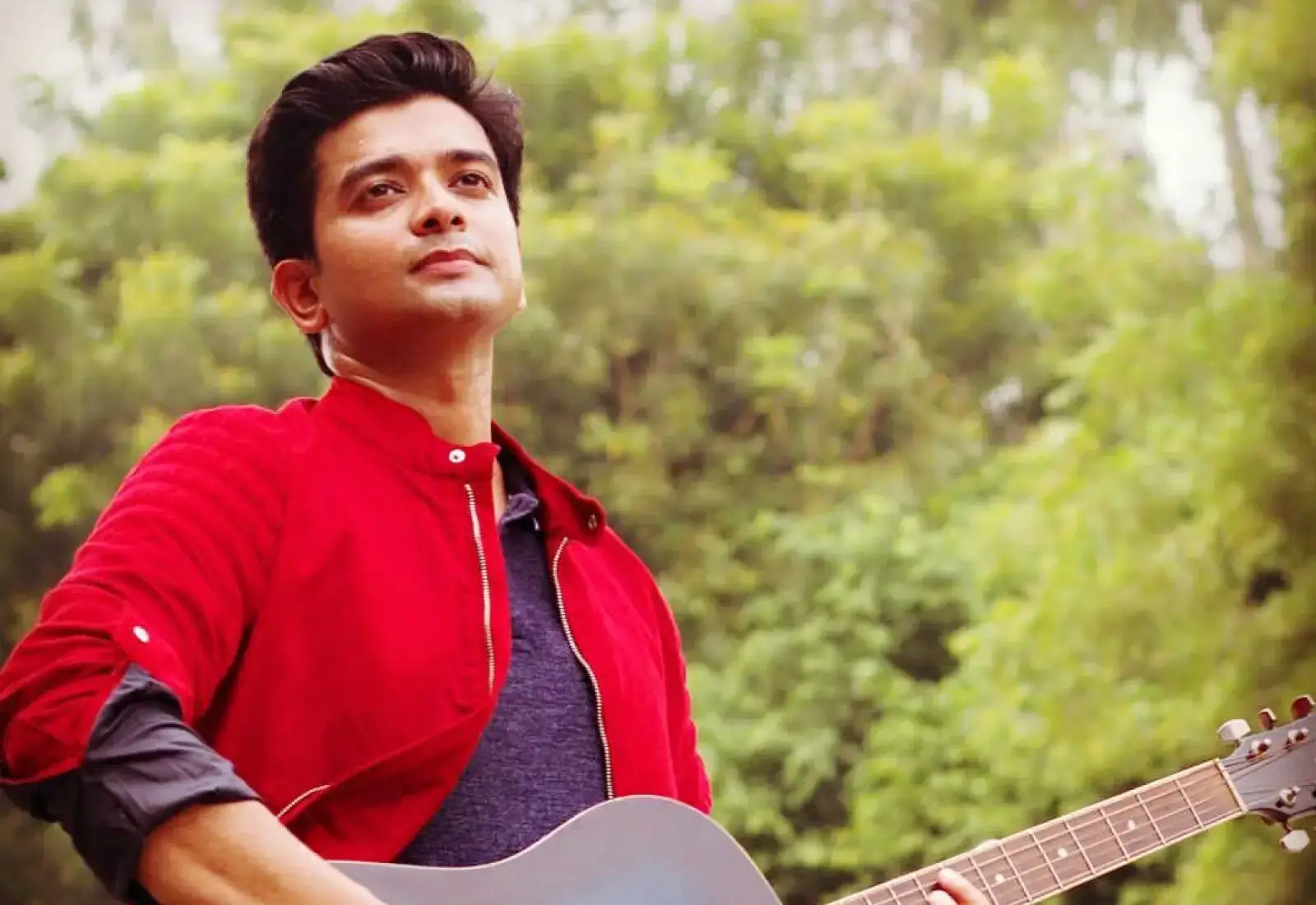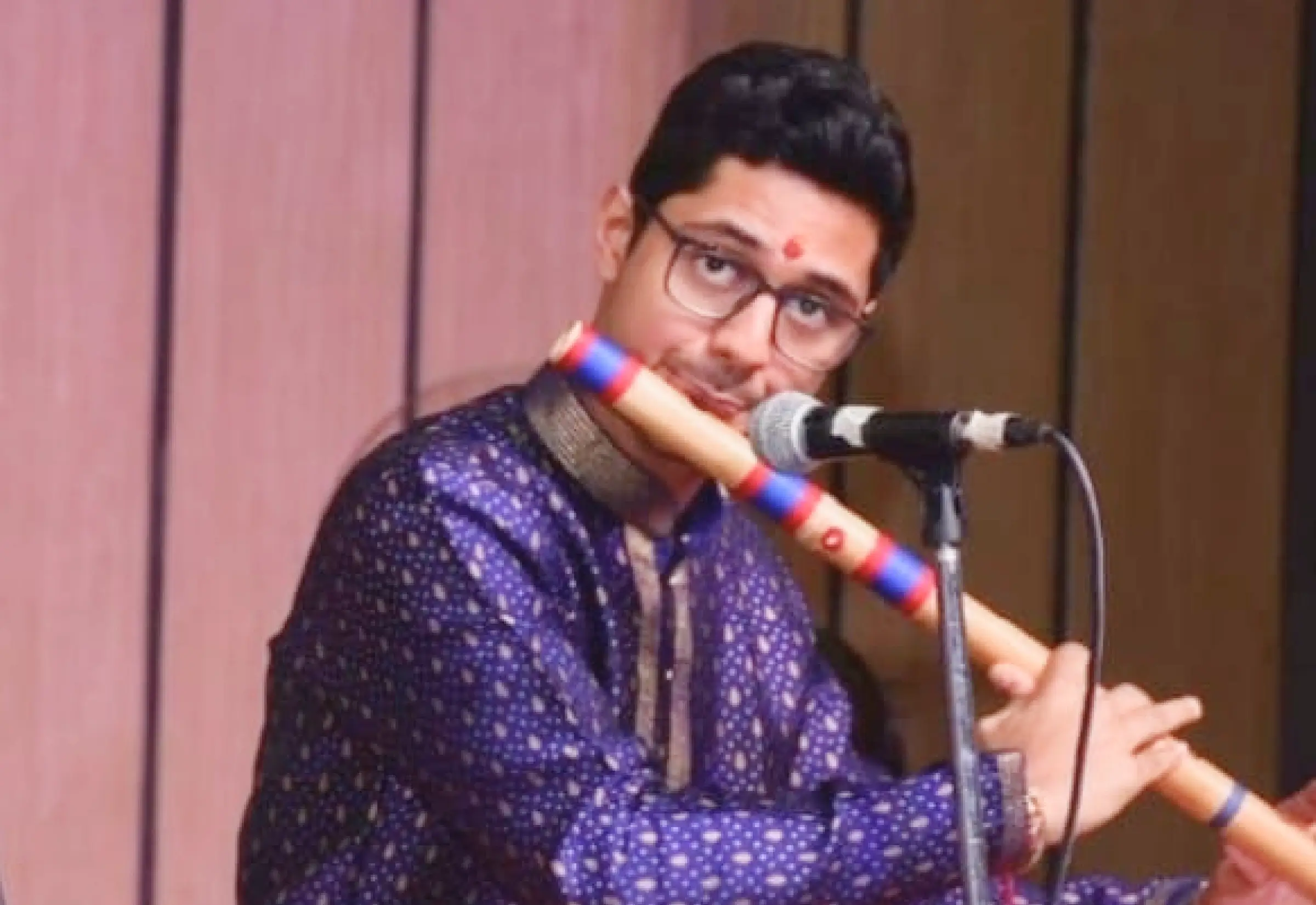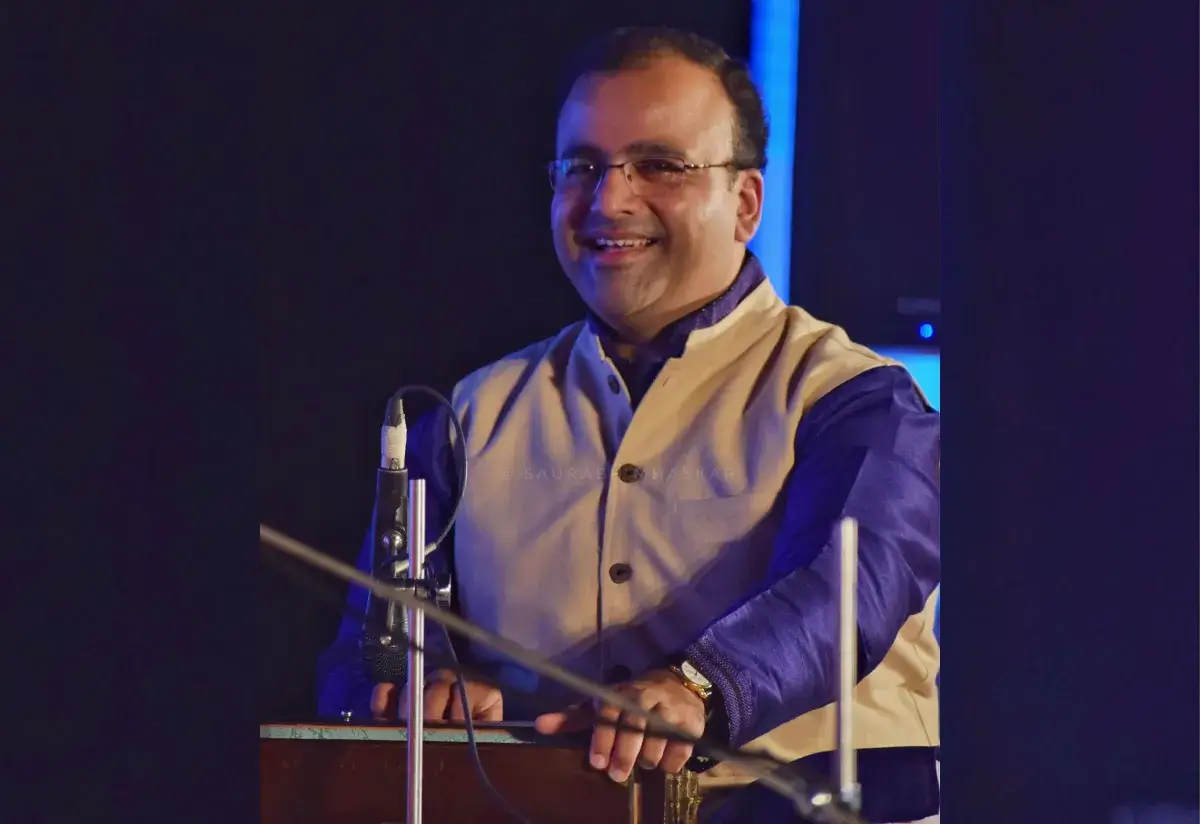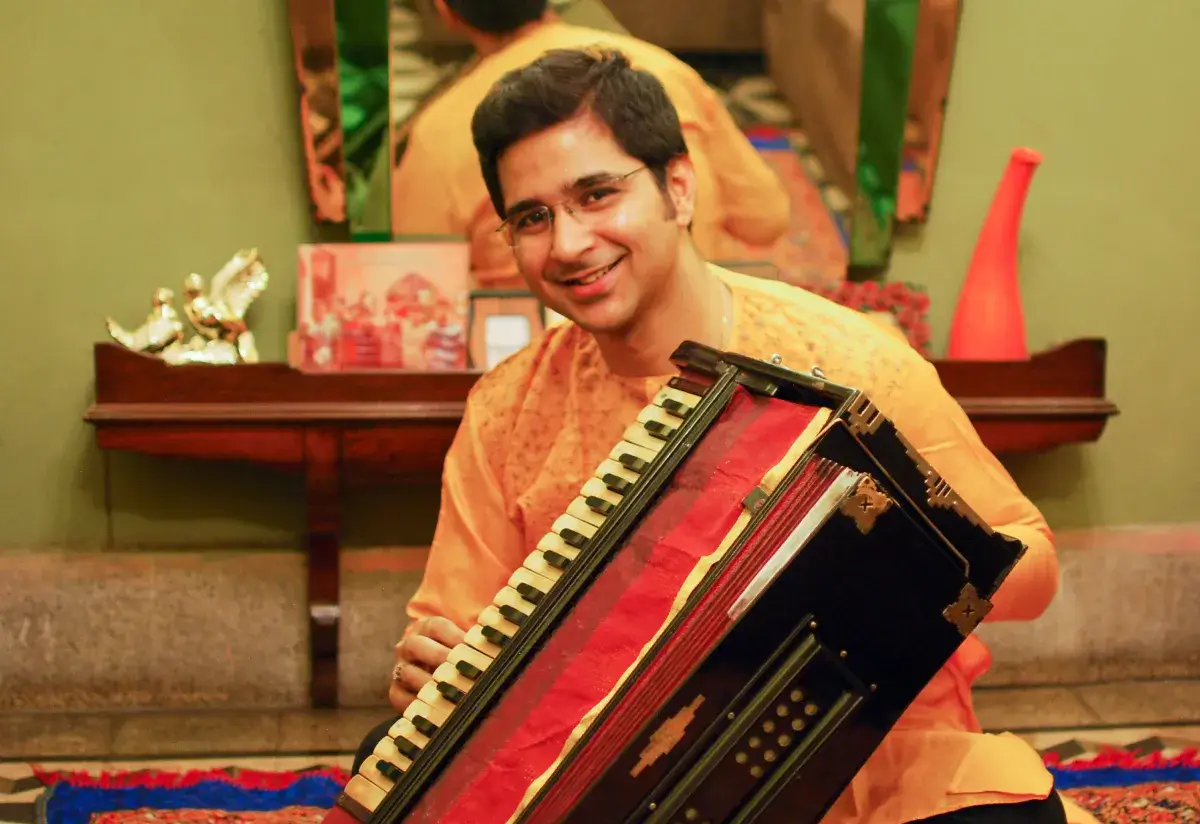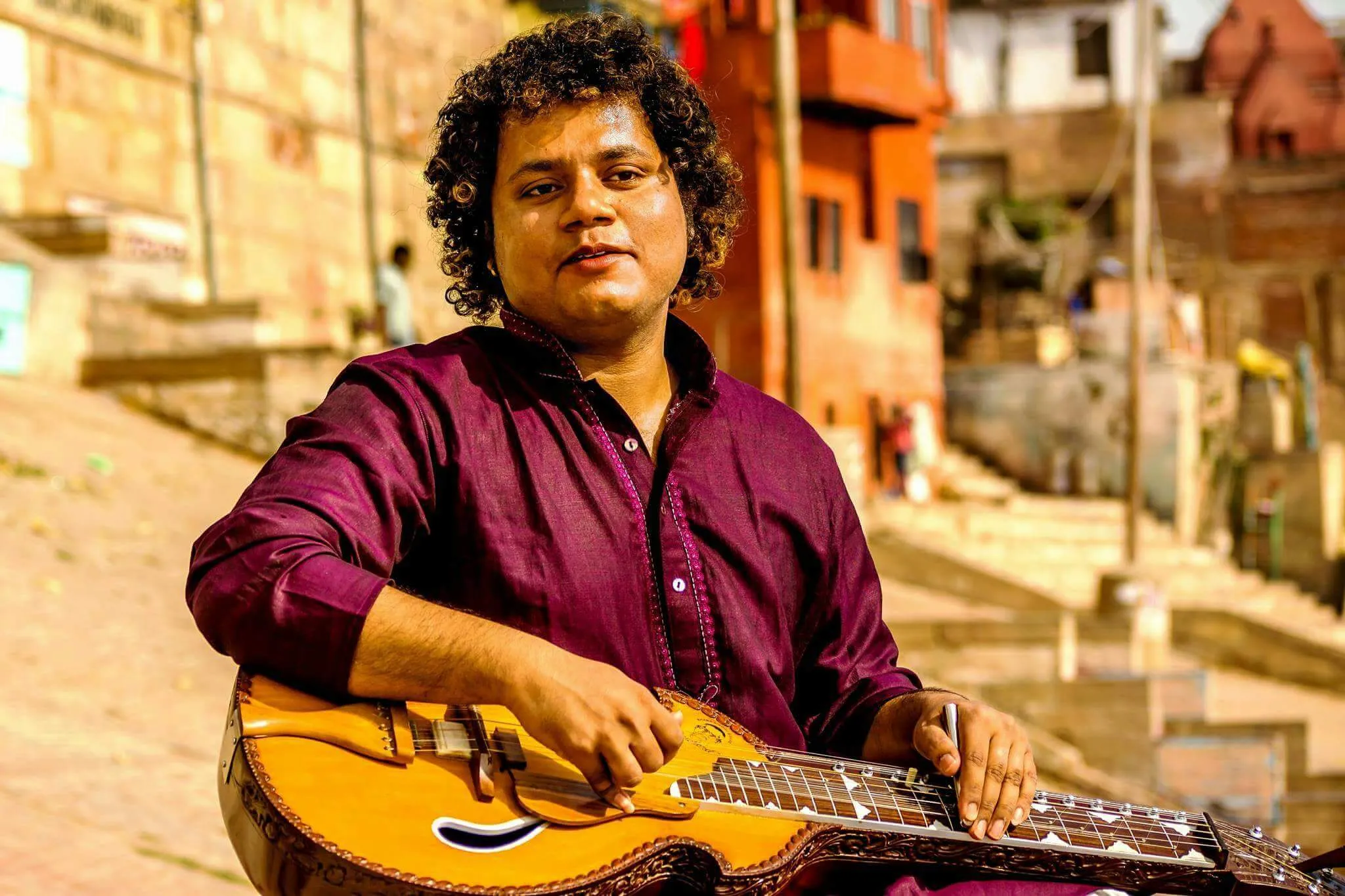10 Best Indian Musical Instruments to Know About
From the resonant strings of the sitar to beats of the tabla to the magical vibrations of the bamboo flutes, India’s musical landscape is as diverse as its culture. This curated list of traditional Indian musical instruments takes you on a rhythmic journey through classical traditions, devotional sounds, and modern fusion.
These instruments span centuries of musical evolution, carrying the sound of India from forest festivals and temple halls to global concert stages and digital studios. Each holds a unique story and a cultural heartbeat that continues to resonate.
Dive into each instrument’s origin, historical significance, evolution, and cultural impact—and meet the artists who brought them to life. Whether you’re a music lover, cultural enthusiast, or curious explorer, this collection offers a rich tapestry of India’s auditory heritage. In this blog, we will explore the 10 best traditional Indian musical instruments along with pictures.
So here we go…
10 Traditional Indian Musical Instruments
1. Sitar - the Face of Indian Classical Music
2. Surbahar - The Meditative Cousin of Music
3. Tabla - The Rhythm of Indian Music
4. Veena - The Divine Music
5. Mridangam - The Rhythmic Heartbeat of Carnatic Music
6. Sarod - Deep, Resonant, Emotive Musical Instrument
7. Shehnai - The Regal and Auspicious Sounds of Indian Music
8. Santoor - The Melodies of Kashmir
9. Harmonium - A Dependable Melodic Support
10. Bansuri - The Heart of Indian Classical and Devotional Music
Ready to tune in? Read on…
1. Sitar - The Face of Indian Classical Music
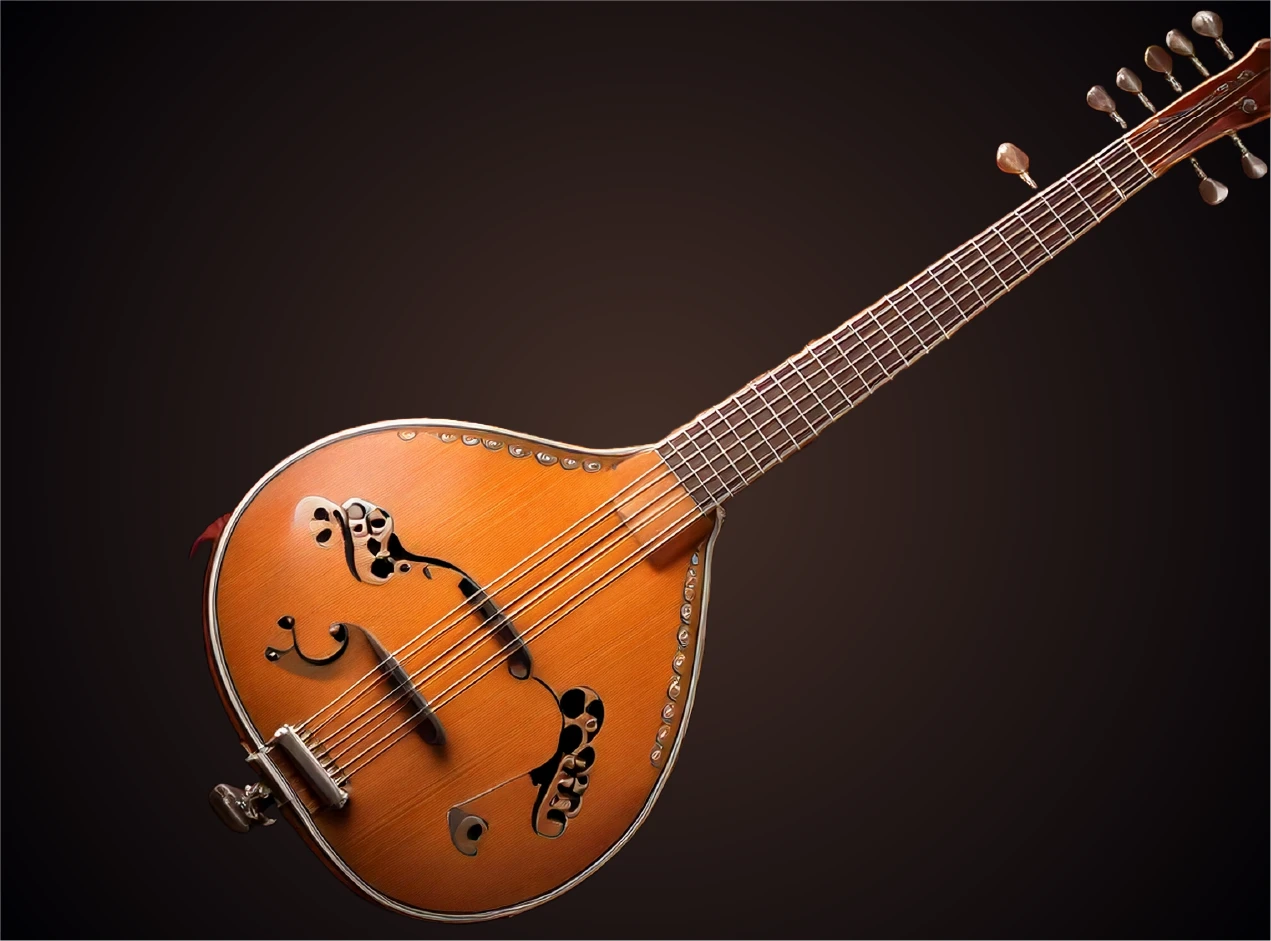
The sitar is the instrument that brought the world closer to Indian classical music. With a long hollow neck, sympathetic strings, and movable frets, it produces a deep, mesmerizing sound ideal for raga exploration. Rooted in Hindustani classical music, it emerged from a fusion of Persian and Indian lutes during the Mughal era. As one of the iconic musical instruments of India, the sitar's reach expanded exponentially through the legendary Ravi Shankar, who introduced it to Western audiences. It continues to evolve through electronic adaptations and cross-genre collaborations, cementing its place in both classical and contemporary music.
2. Surbahar - The Meditative Cousin of Music

The surbahar, often dubbed the "bass sitar," is a lesser-known gem among Indian traditional music instruments. Designed for slow, meditative renditions of ragas—especially the alap section—it offers a deeper tonal range than the sitar. Its large body and long neck allow for expansive expression and sustain, ideal for introspective musical experiences. Though less mainstream, it is revered by classical connoisseurs for its spiritual depth. Used extensively by Dhrupad artists, the surbahar remains a powerful instrument for those seeking to delve into the contemplative side of Indian music instruments.
3. Tabla - The Pulse of the Music of India
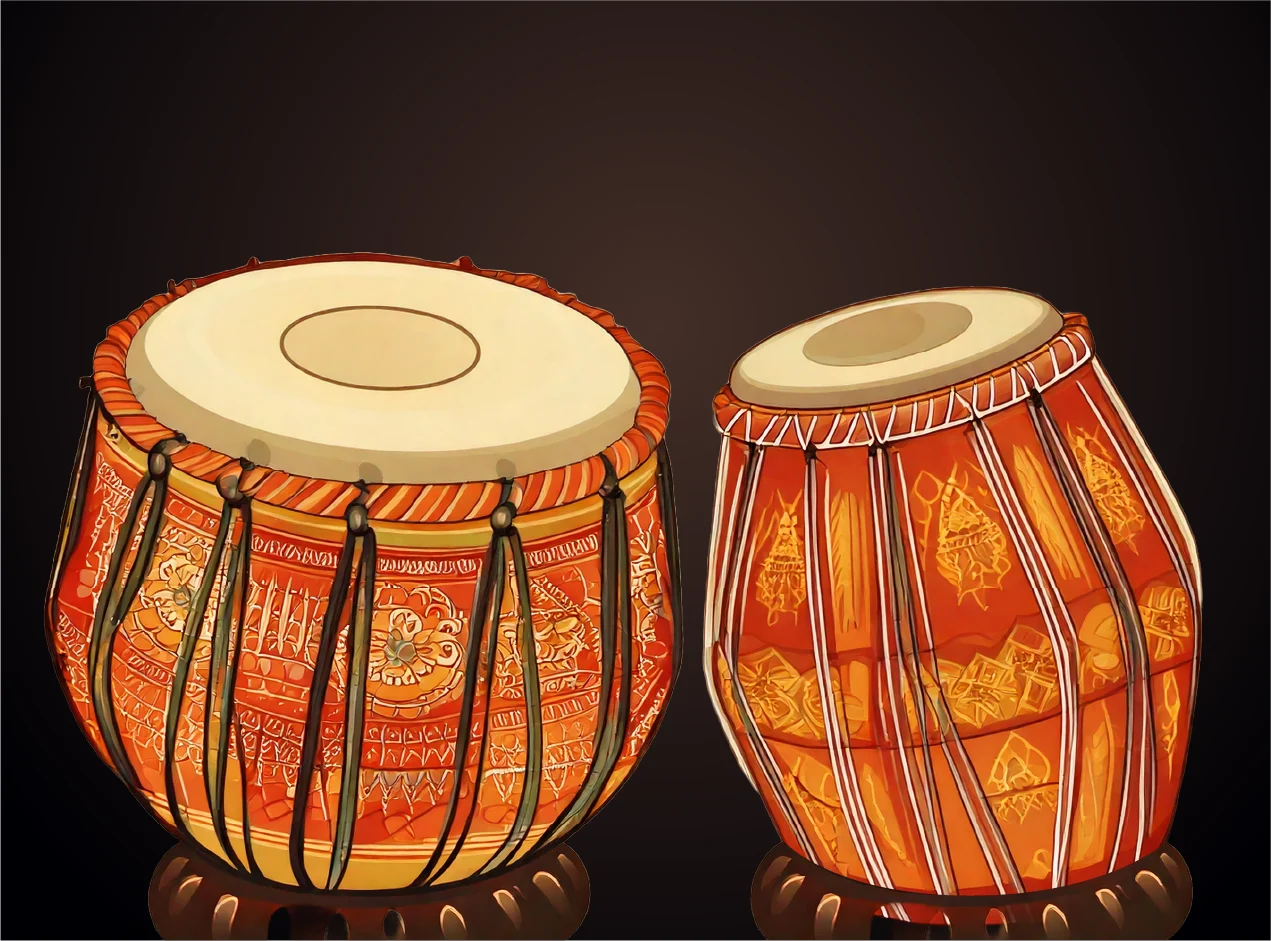
The tabla is the most widely used percussion instrument in North Indian music. As a pair of hand-played drums—dayan (right) and bayan (left)—it is capable of producing a stunning variety of tones and intricate rhythmic patterns. It evolved from the ancient pakhawaj and gained prominence in Mughal courts.Tabla is the most dependable accompaniment in Hindustani classical music that aptly compliments devotional bhajans, Sufi qawwalis, and Bollywood scores. It also testifies its versatility. Renowned tabla virtuosos like Zakir Hussain brought it into global consciousness, and today, it's used in genres ranging from jazz to electronic music, keeping it vital among modern Indian musical instruments.
4. Veena - The Divine Music

The veena is one of the most ancient Indian music instruments, mentioned in sacred Hindu texts and iconography, especially in association with the goddess Saraswati. There are many variants, but the Saraswati veena, used in Carnatic music, is among the most revered. With a large resonating body and plucked strings, it’s prized for its rich, mellow tones. Its intricate technique and spiritual connotations make it a sacred instrument in South Indian traditions. Despite facing stiff competition from more portable instruments, the veena remains a timeless symbol of India’s classical legacy.
5. Mridangam - The Rhythmic Heartbeat of Carnatic Music
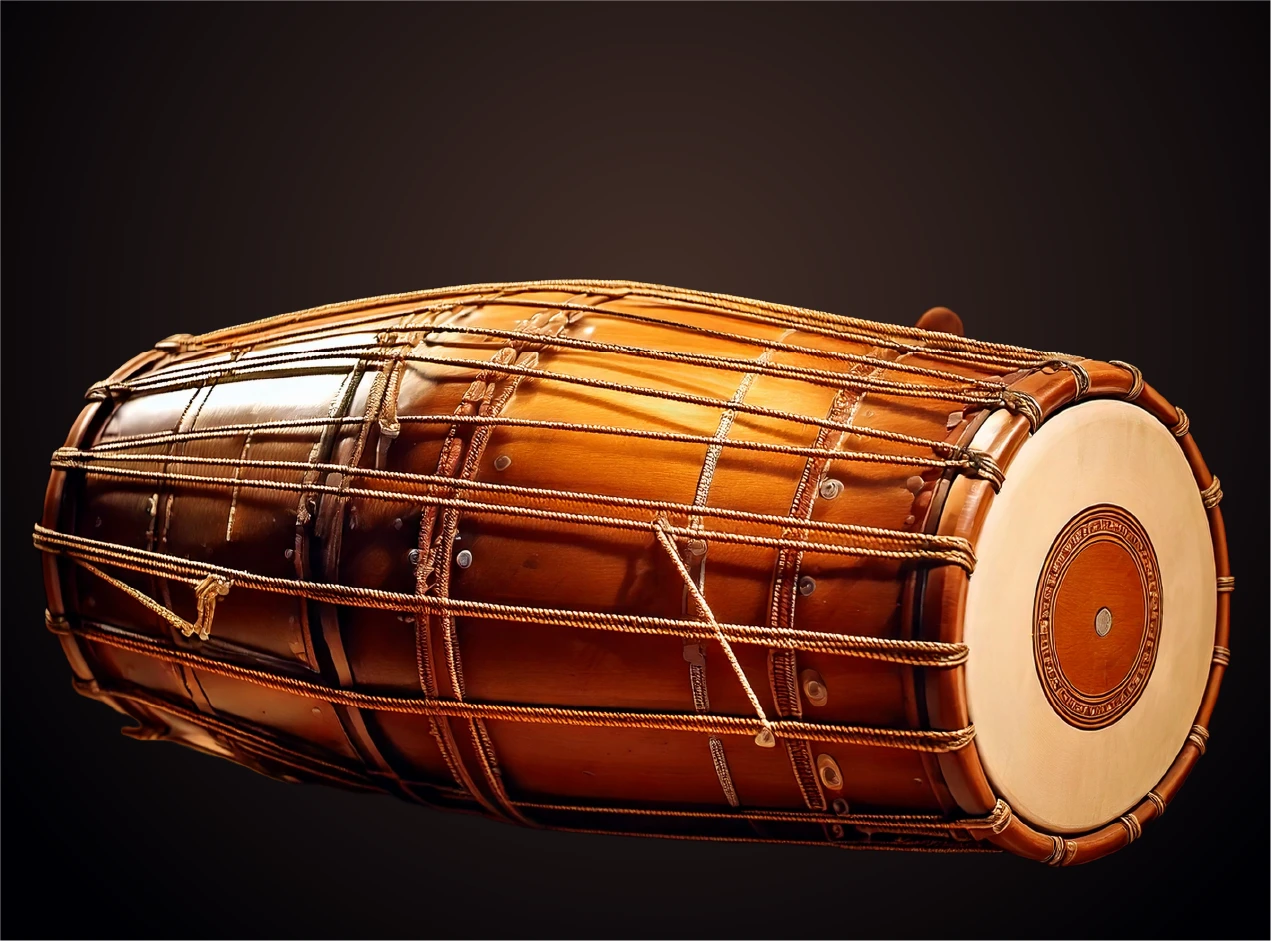
As the rhythmic core of Carnatic concerts, the mridangam is a double-headed drum believed to have divine origins. Mythologically associated with Nandi (Lord Shiva’s bull), it has ancient roots in temple rituals. It is made out of jackfruit wood. Its unique tuning system supports both high-pitched and bass tones. In the realm of Indian instruments, the mridangam is revered for its mathematical precision and dynamic expression. It continues to be innovated upon in tuning techniques and design to suit modern acoustics and performance settings.
6. Sarod - Deep, Resonant, Emotive Musical Instrument
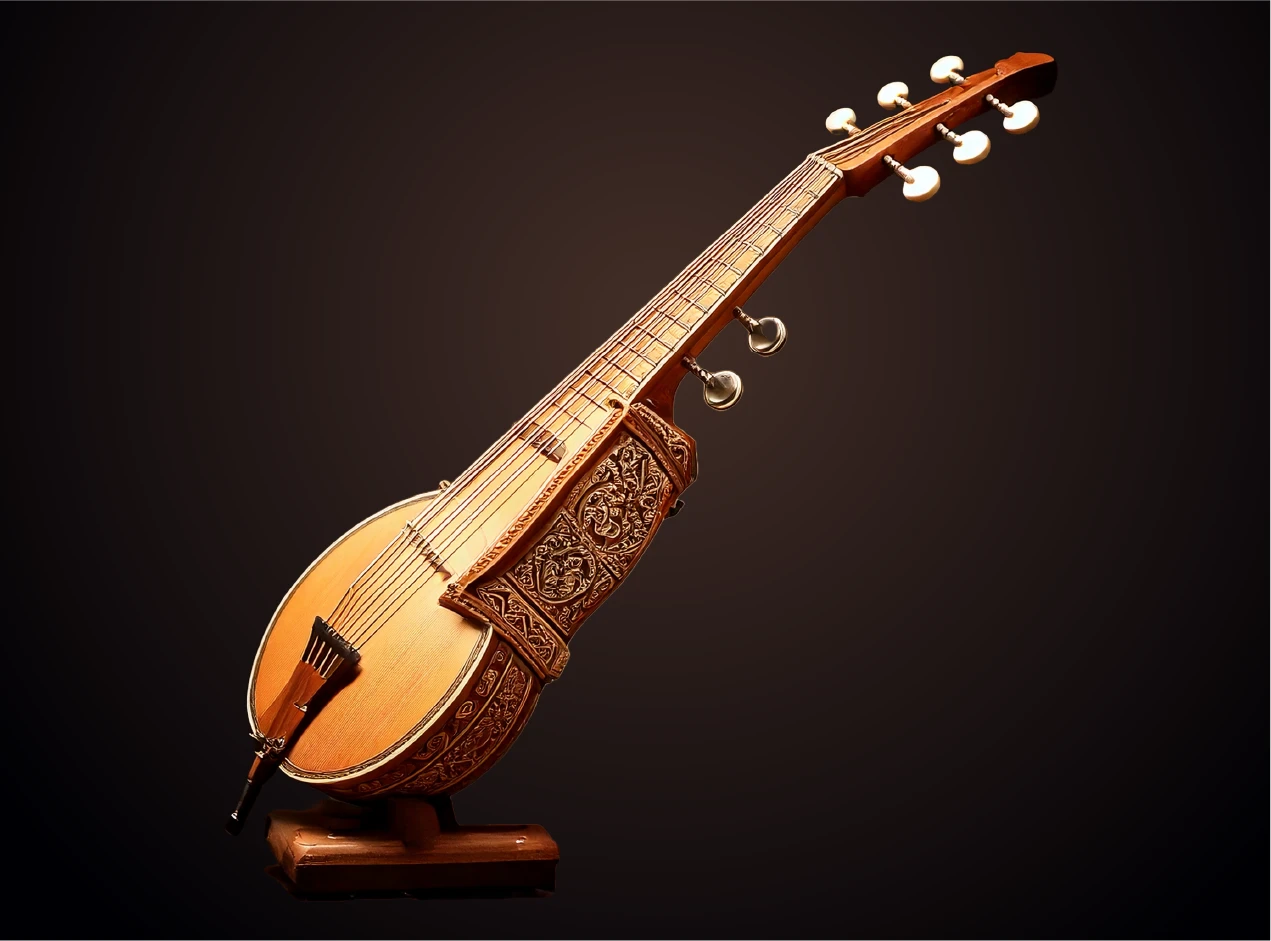
The sarod stands out among Indian musical instruments for its haunting, introspective timbre. Originating from the Afghan rabab, it was adapted in India with a fretless metal fingerboard, allowing for fluid slides and glides (meend) that characterize Indian raga music. It found a home in Hindustani classical music during the Mughal period and was further developed by prominent gharanas. Notable exponents and legends like Ustad Amjad Ali Khan and Ali Akbar Khan have found it to be an ally in their musical journey. It remains a powerful force in classical circles and experimental collaborations.
7. Shehnai - The Regal and Auspicious Sounds of Indian Music

The shehnai is a double-reed wind instrument traditionally played at weddings and auspicious events in North India. Closely related to the oboe, it is equally suitable for celebrations such as weddings as well as for spiritual events or festivals. Popularized by Ustad Bismillah Khan—who performed the shehnai during India's independence ceremony—it transitioned from folk to classical status. Now amplified for concert use, it’s featured in both traditional and fusion genres. Among all Indian music instruments, the shehnai holds a special place for its association with celebration, spirituality, and national pride.
8. Santoor - The Melodies of Kashmir
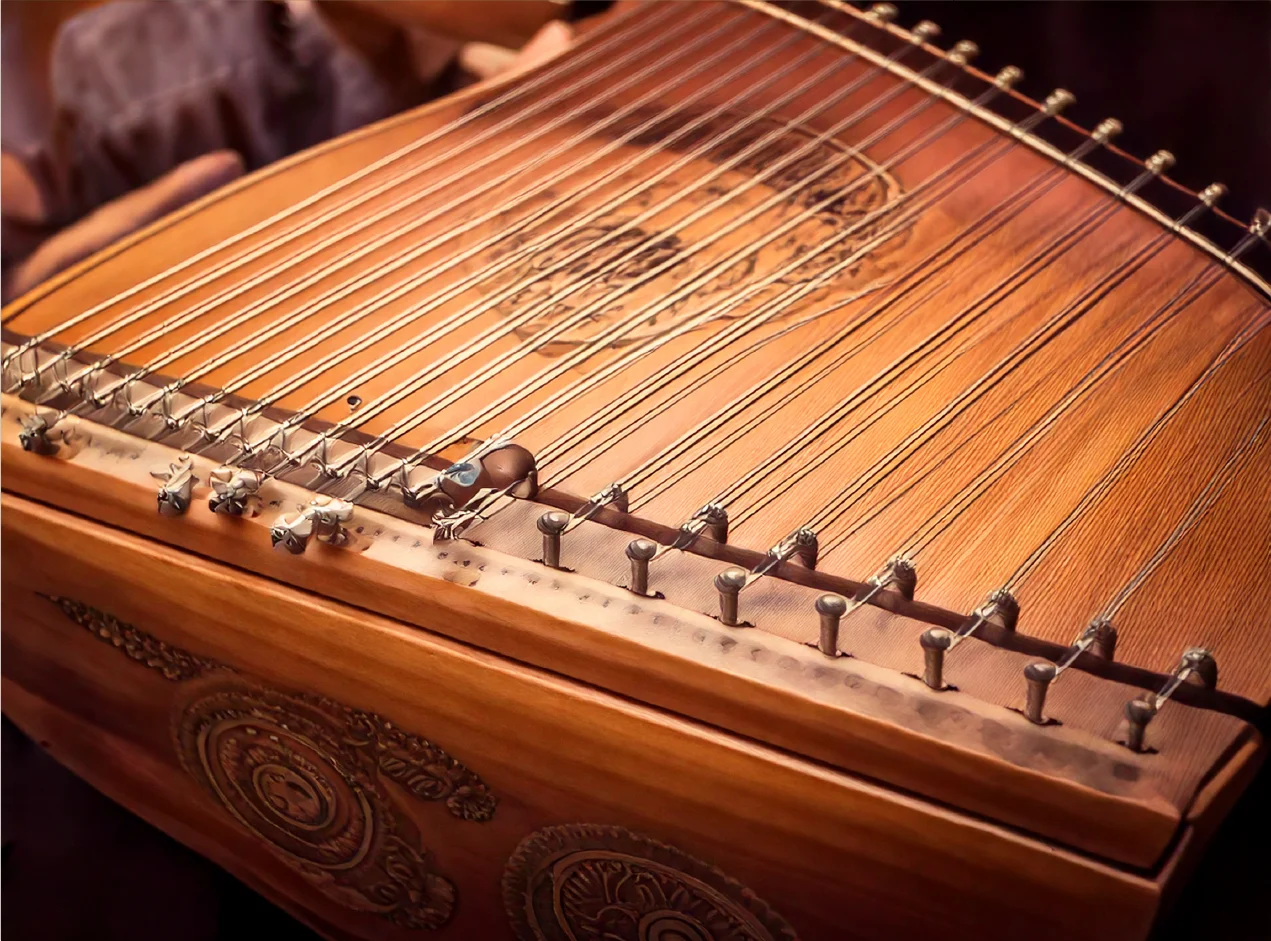
The santoor is a trapezoid-shaped instrument played with light wooden mallets. Though it has ancient origins in Persian and Kashmiri folk music, it was transformed into a classical instrument by Pandit Shivkumar Sharma in the 20th century. The instrument’s 100+ strings and tuned bridges give it a celestial resonance that beautifully captures the nuances of Indian ragas. It’s one of the most melodious Indian musical instruments, often used today in meditative music, film scores, and world music ensembles.
9. Harmonium - A Dependable Melodic Support

Originally brought to India by European missionaries, the harmonium was received well by Indian classical musicians as well as artists from other vocal music styles alike. The reasons - its ease of use, adaptability, and portability. As a keyboard instrument with a hand-pumped bellows system, it supports vocalists in classical and devotional music. Though once criticized for not being able to produce Indian ornamentations (like gamakas), masters like Pt. Tulsidas Borkar adapted playing styles to overcome these limitations. Today, the harmonium is indispensable in bhajans, ghazals, qawwalis, and semi-classical genres, making it one of the most commonly used Indian musical instruments.
10. Bansuri - The Heart of Indian Classical and Devotional Music

The bansuri is one of the oldest musical instruments. The serene and soulful sound of a bansuri is linked to the divine—specifically to Lord Krishna. Traditionally used in folk and devotional music, it entered the classical sphere in the 20th century thanks to artists like Pannalal Ghosh and Hariprasad Chaurasia. With its breathy tone and melodic flexibility, the bansuri has become a favorite across genres, from spiritual chants to Bollywood compositions.
Final Note on Indian Musical Instruments
The journey through Indian musical instruments is not just a musical exploration—it’s a cultural pilgrimage. From the divine melodies of the veena to the cosmic beats of the tabla, each sound is a manifestation of India's ancient and evolving soul. These musical instruments of India carry centuries of stories, rituals, and artistic innovation. As today’s artists reinterpret these traditions, the legacy of Indian instruments continues to grow, touching hearts across generations and geographies.
Whether you're discovering these treasures for the first time or deepening your knowledge, may this guide to the 10 best Indian musical instruments enrich your connection to the vibrant musical heritage of India. And if you want to learn to play any of these musical instruments, explore online music classes.


